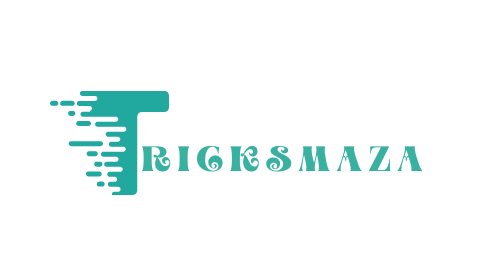For those working with Magento 2, the shift from the default Luma theme to Hyvä has become a popular choice in the world of eCommerce. As Hyvä gains traction among developers and business owners, it stands out as an efficient, high-performing alternative to Luma, with benefits that streamline the front-end experience and development. Let’s explore how transitioning from Luma to Hyvä impacts Magento development and how it enhances the digital storefront.
Luma Theme: The Default Foundation for Magento
The Luma theme serves as Magento’s standard front-end foundation, built with technologies like RequireJS, Less CSS, and Magento’s UI components. As a default framework, Luma offers a solid, functional starting point for eCommerce sites, covering essential features and providing compatibility with Magento’s core updates. Additionally, Luma supports Progressive Web App (PWA) functionality, allowing for a more mobile-friendly approach.
However, while it offers a reliable base, Luma’s structure can become complex, especially in custom projects. Its performance limitations and slower load times make it challenging for modern eCommerce stores aiming for peak performance. Consequently, many developers and businesses are shifting to alternative solutions like the Hyvä theme, which prioritizes speed, usability, and streamlined code, offering a more efficient approach to Magento front-end design.Luma, while functional, doesn’t fully leverage the latest in front-end technologies, which is where Hyvä comes in as a game-changer. With its compatibility with Progressive Web Apps (PWA) and the latest tech innovations, Luma provides a solid starting point but often falls short in speed and customization ease compared to Hyvä.
Introducing Hyvä Theme: A New Era of Front-End Development
Hyvä is redefining Magento front-end development. This alternative to Luma brings a refreshing approach to theme structure and efficiency. Designed with modern tools such as Tailwind CSS and Alpine.js, Hyvä provides a flexible foundation that prioritizes performance and simplicity.
Many developers, like Alex and Manuel, report that transitioning from Luma to Hyvä was smooth, as Hyvä builds on similar logic and structure while integrating better tools. The primary reasons for choosing Hyvä theme development include:
- Performance Enhancement: With Hyvä, developers achieve almost perfect scores in Google Core Web Vitals, essential for eCommerce sites aiming to rank higher and offer a seamless customer experience. Hyvä’s simplified structure, compared to Luma, results in faster load times and minimal resource usage.
- Customizable and User-Friendly: Hyvä enables easier customization, a standout feature compared to the intricate setups required by Luma. Developers can deliver more customizations in less time, ultimately providing clients with a better experience.
- Reduced Complexity: Hyvä has a more straightforward file structure, removing the dependency on extensive JavaScript code, which can sometimes slow down Magento sites. This reduction in complexity allows developers to focus on quality output rather than intricate configurations.
Advantages of Hyvä Theme Development over Luma
Transitioning from Luma to Hyvä brings numerous advantages, specifically in development agility, community support, and performance improvements. Here are the core benefits developers like Alex and Manuel have noted:
- Modern Toolset for Efficiency: Tailwind CSS and Alpine.js not only improve development speed but also enhance the maintainability of the code. Developers are able to work with more examples and better documentation, speeding up the troubleshooting process.
- Optimized for Speed: Performance is a game-changer in today’s digital landscape. The Luma theme often struggles with Core Web Vitals metrics like Time to Interactive (TTI) and Cumulative Layout Shift (CLS). Hyvä, however, minimizes these issues, helping stores maintain excellent performance scores.
- Vibrant Community and Growing Compatibility: Hyvä’s popularity is rapidly increasing, and the community around it is expanding as well. Extensions and customizations are continuously being developed for Hyvä, and companies like Amasty are working to add compatibility to their popular Magento extensions.
Considerations for Hyvä Adoption
While Hyvä’s advantages are evident, there are considerations to keep in mind. Due to its unique setup, some existing JavaScript-based third-party modules may not work seamlessly with Hyvä. This could require certain JavaScript components to be re-coded, potentially adding time to the migration process. However, this transition is often seen as an opportunity to refresh outdated code and align with current best practices, adding long-term value.
Real-World Applications and Impact of Hyvä on Development Processes
The impact of migrating from Luma to Hyvä extends beyond technical upgrades; it transforms how developers approach front-end work. According to Manuel, Hyvä has simplified their daily workflow, allowing his team to deliver quality results faster and with less complexity. Alex echoes this sentiment, emphasizing how Hyvä’s ease of customization has enabled him to better meet client requirements across various project scales.
In smaller projects, Alex’s team uses Tailwind components to quickly design simple yet effective layouts, a valuable asset for clients who need rapid development. For larger, custom projects, Hyvä offers flexible style inheritance and robust template organization. This allows them to implement high-performing designs without sacrificing scalability.



More Stories
Dental CRM: Building Strong, Lasting Patient Relationships.
How Shopify Themes Influence Store Speed
Best Practices Fantasy Sports App Development